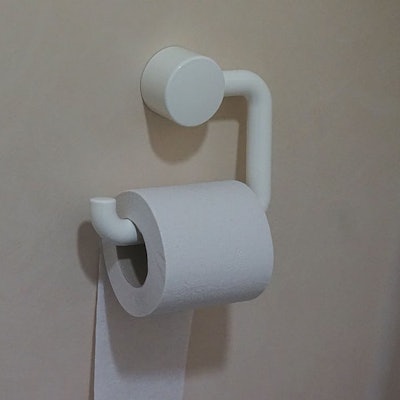
It seems like they’ll throw any waste product in asphalt these days just to see what works. From pig manure to algae and cigarette butts, our asphalt roadways and parking lots are creating opportunities for waste products to be reused instead of being left to rot.
Toilet paper is the latest waste product to be tested in asphalt and a 0.6-mile bike path in the Netherlands connecting two towns is the first to be paved with the repurposed material.
Why Toilet Paper?
Most roads in the Netherlands are paved with open-graded asphalt friction course (OGFC), which is porous and water permeable. Compared to more run-of-the-mill types of asphalt, OGFC requires higher volumes of bitumen, which binds together the stones and sand that make up the asphalt. Cellulose is added to thicken the mixture and prevent the bitumen from dripping off the aggregate during processing, transportation and paving.
“When roads get wet, [they get] slippery, so we use this asphalt because it takes water away from the road surface quicker,” says Ernst Worrell, professor of energy, resources and technological change at Utrecht University. Wicking water from the road is an important safety measure for a country that sees 27 to 35 inches of rainfall per year.
Meanwhile, the Dutch flush an estimated 180,000 tons of toilet paper annually. That paper makes its way to wastewater treatment plants, where it’s filtered out with the rest of the solids. The resulting sludge is dried and incinerated.
Aside from producing large amounts of CO2, the incineration process destroys many valuable resources found in wastewater, one of which is cellulose.
The bicycle path uses what’s called tertiary cellulose, extracted from waste streams, says Erik Pijlman, director at KNN Cellulose, one of the partners on the project. “We take the cellulose out of these streams and once again make it into a [raw material],” he says.
There are plenty of materials that contain cellulose, but paving roads is a pretty good use for the one type of recycled cellulose that can’t be incorporated into a lot of other products: the kind that comes into regular contact with waste.
People tend to not want to come in contact with things that have touched waste, though, so no amount of sterilization makes it OK to turn the product into recycled napkins or other paper products.
But since toilet paper is typically a source of high-quality cellulose fibers (from wood chips or recycled paper), it would be a shame to waste it. Hence the pavement, which is mixed at such high temperatures that the manufacturing process would kill off any remaining pathogens that might possibly lurk within the post-treatment toilet paper.
The recycled toilet paper in this case is collected during wastewater processing, where it’s separated out from all that excrement and then sterilized, bleached and dried for reuse. The result is a fluffy, grayish material.
To do this, the paper fibers are sifted out of the wastewater by a 0.35 millimeter industrial sieve before proceeding through a series of machines to be cleaned, sterilized, bleached and dried. “If you look at it, you would not expect it to have originated from wastewater,” says Chris Reijken, wastewater treatment advisor at Waternet, one of 22 water authorities in the Netherlands, and part of the working group overseeing the project. “You can touch it, you can use it, it’s no problem.”
The toilet paper asphalt has been around for about a year now, and according to CityLab writer Tiffany R. Jansen, it looks almost identical to the rest of the bike path. The toilet paper-laced asphalt has since been used to pave a parking lot and a dyke in the region, too.


![Lee Boy Facility 2025 17 Use[16]](https://img.forconstructionpros.com/mindful/acbm/workspaces/default/uploads/2025/09/leeboy-facility-2025-17-use16.AbONDzEzbV.jpg?auto=format%2Ccompress&fit=crop&h=100&q=70&w=100)







![Lee Boy Facility 2025 17 Use[16]](https://img.forconstructionpros.com/mindful/acbm/workspaces/default/uploads/2025/09/leeboy-facility-2025-17-use16.AbONDzEzbV.jpg?ar=16%3A9&auto=format%2Ccompress&fit=crop&h=135&q=70&w=240)








